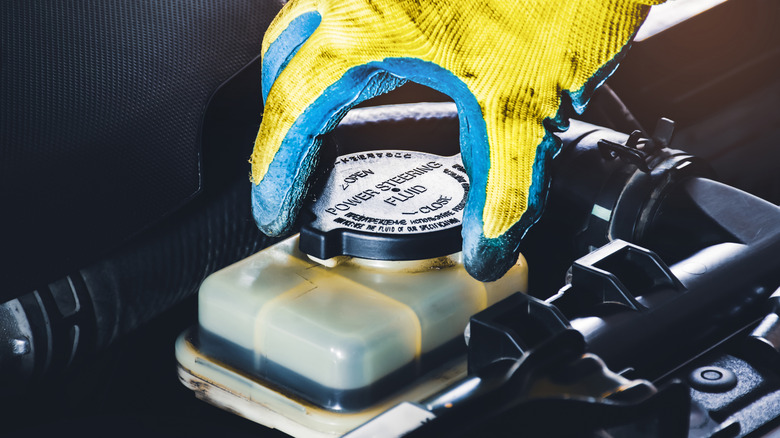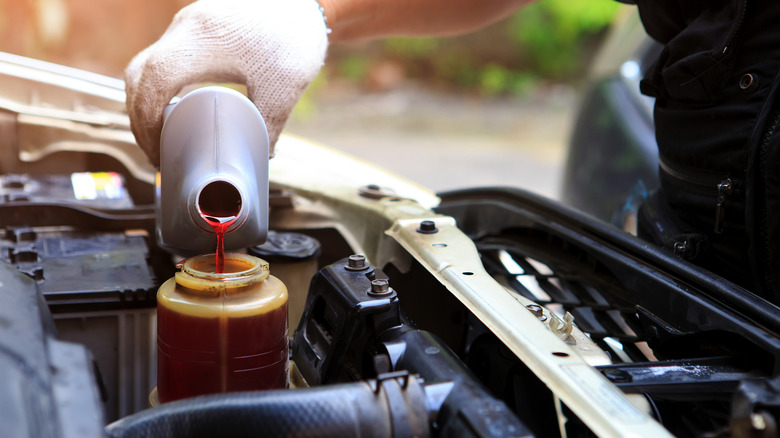How To Flush Power Steering Fluid (And What It Costs)
We may receive a commission on purchases made from links.
My fascination with automobiles started as a curiosity, mainly on the intricacies that make them work and the many components needed to transport their owners from point A to B. As a budding 13-year-old, my entire world revolved around a brand-spanking-new Mitsubishi Galant GTi (with a five-speed manual) parked neatly outside our home, all thanks to my visiting aunt.
Back then, I was too young to realize that my aunt's Galant was the 1989 Motor Trend Car of the Year or had the legendary 4G63 engine with double overhead camshafts (DOHC). I was a fool for not knowing the sixth-gen Galant was to become the catalyst for the iconic Lancer Evolution series. What caught my attention was the owner's manual and the things required to keep a car ticking like a clock.
Since then, I've been a stickler for car maintenance. I learned early on that periodically changing the oil increases the odds of keeping a car problem-free, and the same goes for the automatic transmission fluid (ATF). I also discovered that the power steering fluid requires a certain level of attention, and I learned the hard way when my old and trusted Nissan Vanette started squealing like a cow (the surefire sign of the lack of power steering fluid). Then, the steering firmed up like it had no power assist.
Power steering maintenance: When should the fluid be flushed?
The system runs on power steering fluid if your car has hydraulically-assisted power steering. It also has a fluid reservoir in the engine bay, typically near the power steering pump. If you open the filler cap and inspect the fluid, it should have a bright, reddish color and a chemically sweet smell.
However, it may be time to replace or flush out the power steering fluid if the reservoir has a dark brown, black, or generally dirty fluid instead of a clean, reddish liquid. Then again, checking your car's owner's manual before doing anything else is best. Some car brands like Honda do not recommend flushing out the power steering fluid, while other manufacturers like Toyota and Ford recommend changing the fluid once every two years or every 50,000 to 75,000 miles.
No matter what car, flushing out the old fluid and filling the system with fresh power steering fluid will make the vehicle steer quieter and smoother and protect it from leaks. Since most problems with hydraulic power steering are due to poor fluid quality or lack of fluid, you won't harm the system by flushing out the old fluid as long as you put in the appropriate type of power steering fluid. And for that, you'll need to consult the owner's manual.
How much does it cost to flush out the power steering fluid?
Dealerships or repair garages typically charge around $170 to $200 for a power steering fluid flush. However, the figures could go higher depending on the make and model of the vehicle. Some cars require premium synthetic fluid that costs more than regular power steering fluid.
The good news is you don't need to spend hundreds to flush the power steering fluid if you do it yourself. All you need is a plastic turkey baster (preferably with a see-through funnel) like the GoodCook 11.5 in Turkey Baster to suck out the old fluid and a few quarts of fresh power steering fluid like Ford Genuine Mercon-V Automatic Transmission and Power Steering Fluid. With all the necessary materials (including a few rags, paper towels, and an old plastic bottle to collect the old fluid), you can flush out and replenish the power steering without spending more than $20.
The first step is to suck out the old fluid inside the reservoir using the turkey baster to remove as much of it as possible. Next, pour in the fresh power steering fluid, ensuring not to overfill the reservoir. Replace the cap tightly, start the engine, and let it idle for a few minutes while frequently turning the steering wheel lock-to-lock to circulate the fresh fluid inside the system.
The final step is to turn off the engine, open the power steering fluid reservoir, and repeat the above steps to suck out all the fluid from the reservoir using the turkey baster. The idea is to flush out and refill the system repeatedly until the reservoir is teeming with bright, fresh power steering fluid. It's the easiest method that doesn't require fiddling with power steering lines or dealing with hard-to-clean spills.


